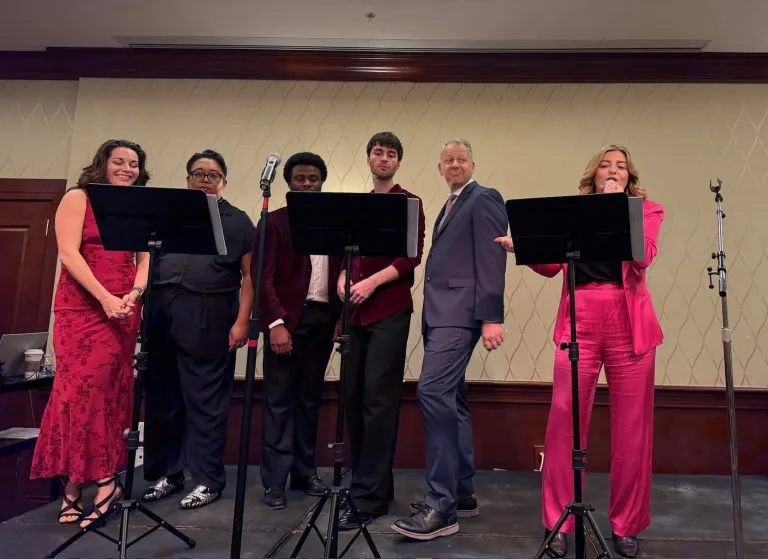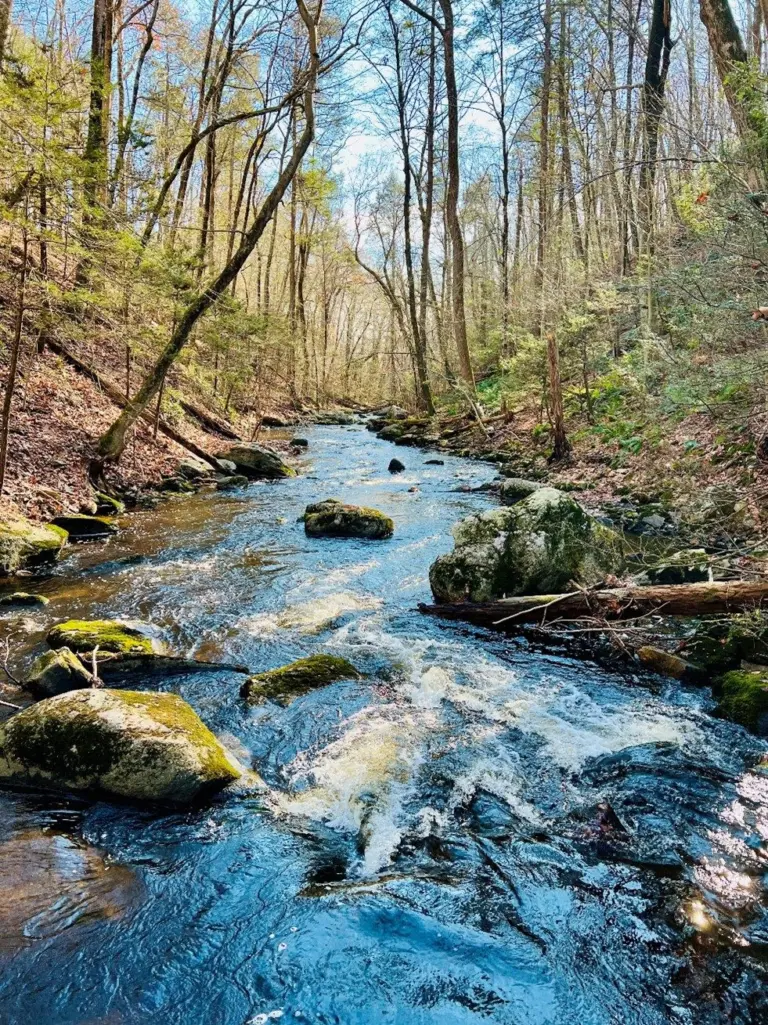
By Mike Abrahams
At the April 16th meeting of the Retired Men’s Association Arnold Gordon introduced the speaker, Seth Grae, Chairman and Chief Executive Officer of Lightbridge Corporation (https://www.ltbridge.com/). Grae leads the company’s efforts to develop nuclear fuel technology to improve the safety and economics of existing and new power reactors, including small modular reactors. He led Lightbridge’s advisory roles to governments of countries seeking to start or expand their own nuclear power programs. Grae is chairman of the American Nuclear Society’s International Council and is a member of the World Economic Forum’s Advanced Energy Solutions Community. He is also a member of the board of directors of the Nuclear Energy Institute. He is a frequent speaker about nuclear power at international conferences and at universities.
The presentation began with a grounding in the realities of the present. Grae didn’t shy away from acknowledging the volatility, changes, and unpredictability that characterize today’s energy landscape. He highlighted the surging demand for electricity, noting that utilities in the United States and across the globe are grappling with how to meet projected needs just a decade from now.
Grae underscored the staggering energy density of nuclear power—a million-to-one advantage over other sources. It’s this efficiency that makes nuclear an unavoidable player in the energy mix, even in countries like Japan, once shaken by the Fukushima disaster. Grae recounted his visit to Fukushima, where he witnessed the reopening of reactors and heard about plans for new construction, each project approved by local prefectures. This, he argued, is a testament to changing attitudes as countries seek energy independence and affordable power.
Energy security emerged as a central theme, encompassing everything from avoiding reliance on volatile suppliers to protecting critical infrastructure from cyber-attacks. Grae spoke of small modular reactors (SMRs) serving military bases and other strategic assets, safeguarding them against grid failures.
Climate commitments were another driving force, and Grae, in his role with the American Nuclear Society’s International Council, has been a visible presence at recent COP conferences, the UN’s climate conventions. There he witnessed the rising prominence of nuclear energy in climate discussions, culminating in declarations from the United States and other nations to triple nuclear capacity by 2050.
Nuclear power is, as Grae highlighted, one of the most bipartisan issues in Washington D.C. He participates in monthly congressional dinners where political affiliations fade amidst shared support for nuclear energy.
Grae detailed nuclear energy’s remarkable grid reliability. U.S. nuclear reactors, which provide about 20% of the nation’s electricity, operate at an average capacity factor of 93%, carefully planned to avoid power disruptions. This reliability is critical for data centers and other industries demanding an uninterrupted power supply, leading to the consideration of facility designs that include multiple reactors for full redundancy.
The safety record of nuclear energy, according to Grae, is unmatched. No one has died or been harmed from radiation in the history of the U.S. nuclear power industry, with safety protocols so rigorous they extend to simple acts like holding railings on stairways. Currently, there are 400 large nuclear reactors worldwide, with plans to add 800 more by 2050, a mix of large and small reactors. In the U.S., 94 plants, including two at Millstone, deliver 20% of the nation’s electricity.
Grae then shifted focus to the value of existing reactors, noting that virtually every U.S. reactor has had its license extended, with many seeking extensions beyond 60 and even 80 years. This isn’t simply about aging infrastructure; it’s about robust containment domes, reactor pressure vessels, and continual replacement of components to keep plants like new.
The presentation also included a glimpse into Lightbridge Corporation and its mission to design advanced nuclear fuels that enhance the safety and economics of existing and new reactors. These fuels can increase power output while improving safety margins and extending fuel cycles.
Grae emphasized that metrics such as average life expectancy, health, education, infant mortality, GDP per capita, and wealth all correlate closely with power per capita. He pointed out that many modernized industries, such as AI, steel, and cement are so dependent on electrical power that the abundance of electricity has become a necessity for high paying jobs.
He cited the growing trend of closed reactors reopening, such as Holtec International’s efforts at Palisades in Michigan, and NextEra Utility’s move to reopen the Duane Arnold Nuclear Power Plant in Iowa. Microsoft’s power purchase agreement with Constellation to reopen Three Mile Island Unit 1 shows that support for nuclear power in the United States is strong, with the local community and the state of Pennsylvania strongly supportive.
The presentation touched on the strategic advantages of repurposing coal plant sites with SMRs. A Department of Energy study found 80% of coal plant sites are well-suited for SMRs, due to their existing cooling water, electrical switchyards, and grid connections.
The presentation concluded with a look toward the future. He shared a picture of a mock-up of a module of an SMR, at NuScale in Corvallis, Oregon. He discussed opportunities that were becoming available for mining and enriching uranium to support the future development of nuclear power in the United States. The presentation was followed by a number of questions that continued after the meeting ended at noon.
The talk can be viewed by going to the RMA website at https://greenwichrma.org, and clicking on “Speakers.”
The RMA’s upcoming presentation, “History and Highlights of the Wadsworth Atheneum Museum of Art” by Christi Moraga, is scheduled for 11 AM on Wednesday, April 30, 2025. Note: This and all future RMA presentations will be held at Christ Church Greenwich, Parish Hall, 254 E. Putnam Avenue, Greenwich, CT 06830.
Explore the history of the Wadsworth Atheneum Museum of Art and highlights from its expansive collection in this docent-guided presentation. Founded in 1842, the Wadsworth is located in Hartford and is America’s oldest continuously-operating public art museum. Its collection of nearly 50,000 works of art spans from antiquity to the 21st century. Highlights include the Morgan collection of Greek and Roman antiquities and European decorative arts; world-renowned Baroque and Surrealist paintings; an unsurpassed collection of Hudson River School landscapes; European and American Impressionist paintings; Modernist masterpieces; the Wallace Nutting collection of American colonial furniture and decorative arts; African American art and artifacts; and contemporary art. More information is on the website, thewadsworth.org.
Christi Moraga has a B.A and M.A from Middlebury College in Vermont. She became a full-time docent for the Wadsworth Atheneum Museum of Art in 2018 after retiring from 36 years of teaching French, Spanish and ESL in Farmington, Connecticut. She prepares in-person and virtual tours for adults, school groups and families. Christi has been instrumental in bringing more World Languages into the museum through preparing tours in French and Spanish for the community and high school classes.
Christi has served on the Board of the Docent Council in various capacities – secretary, co-leader of the Extended Trip, and is chairperson of the Connecticut Art Docent Network. She likes sharing ideas with other docents and has proudly represented the Wadsworth Docent Council at the National Docent Symposium in 2022 and 2024. Christi does deep dives into specific art objects of the Wadsworth Atheneum by regularly researching and writing for the Docent Dialogue. She loves language, culture, history and of course, art history. Drawing from all of these, she delves into her assignments with passion!
To stream the presentation by Christi Moraga at 11 AM on Wednesday, April 30, click on https://bit.ly/30IBj21. This presentation will also be available on local public access TV channels, Verizon FIOS channel 24 and Optimum (Cablevision) channel 79.
Note: The views expressed in these presentations are those of the speakers. They are not intended to represent the views of the RMA or its members.
RMA speaker presentations are presented as a community service at no cost to in-person or Zoom attendees, regardless of gender. Any member of the public who would like to receive a weekly email announcement of future speakers should send a request to members@greenwichrma.org. The RMA urges all eligible individuals to consider becoming a member of our great organization, and thereby enjoy all the available fellowship, volunteer, and community service opportunities which the RMA offers to its members. For further information, go to https://greenwichrma.org/, or contact info@greenwichrma.org.




